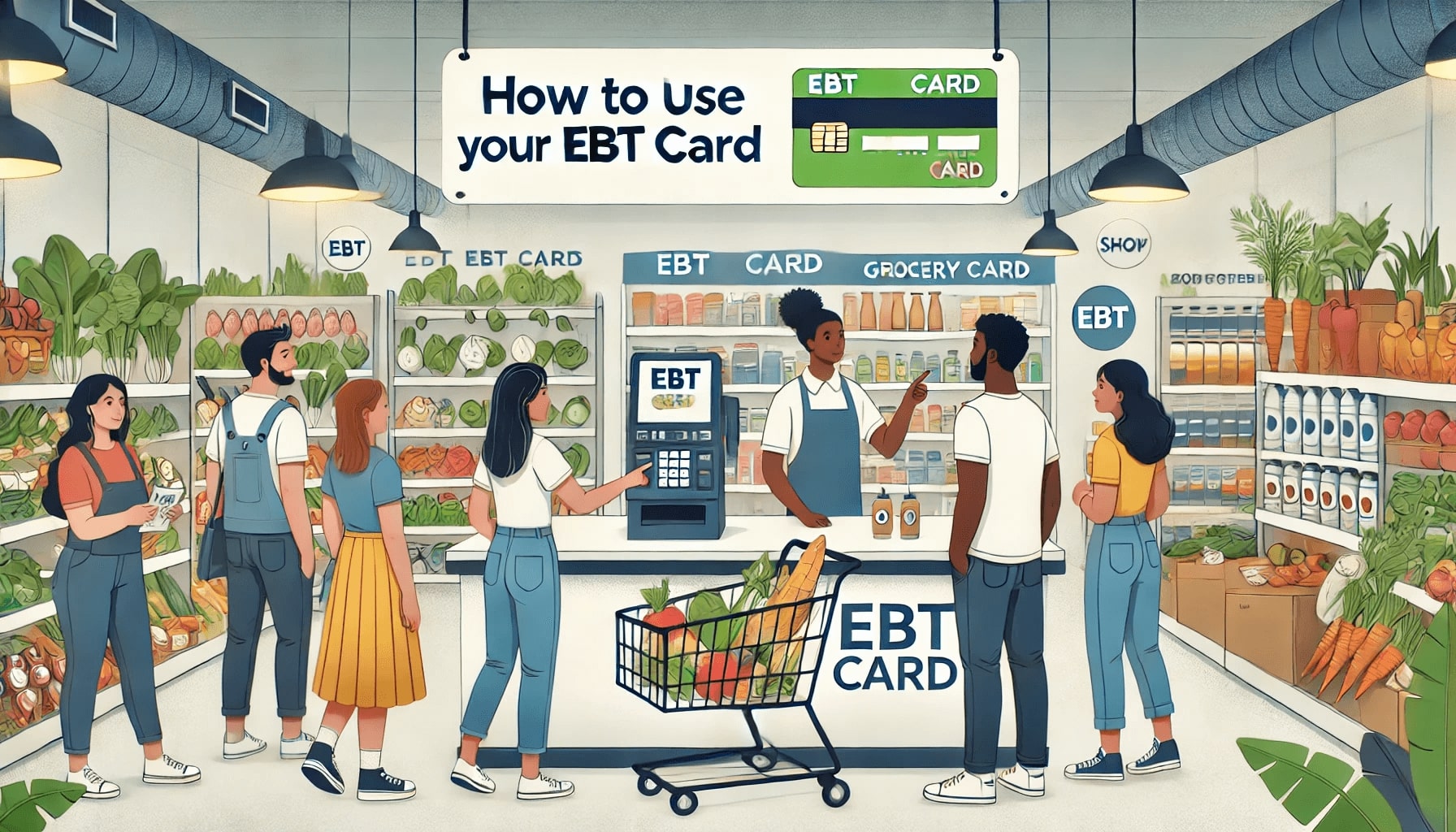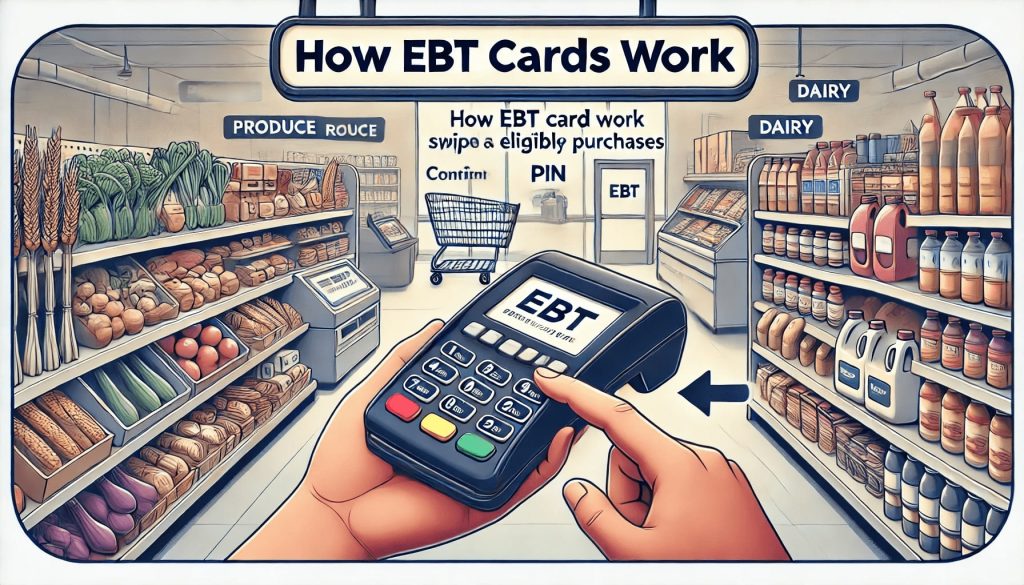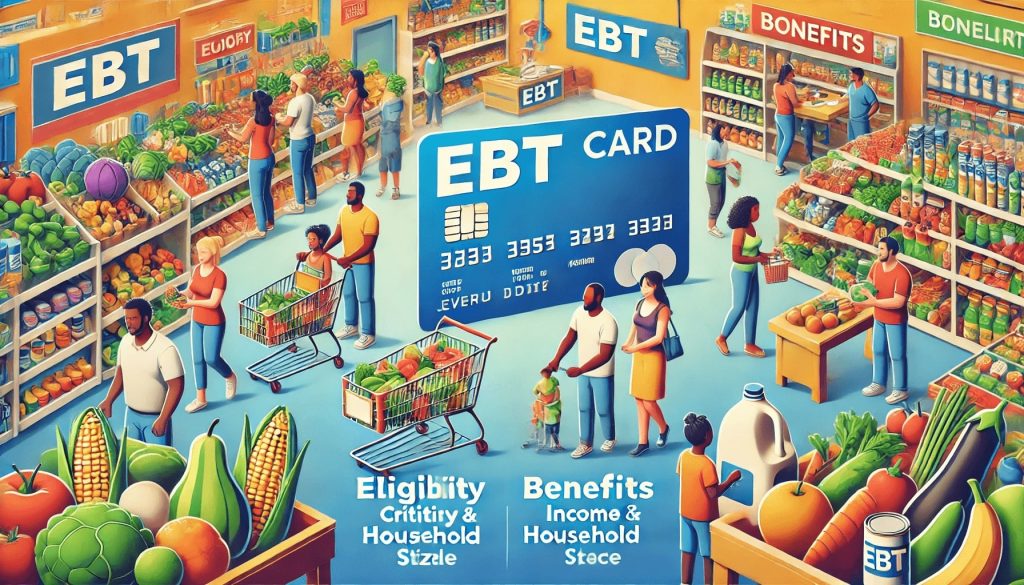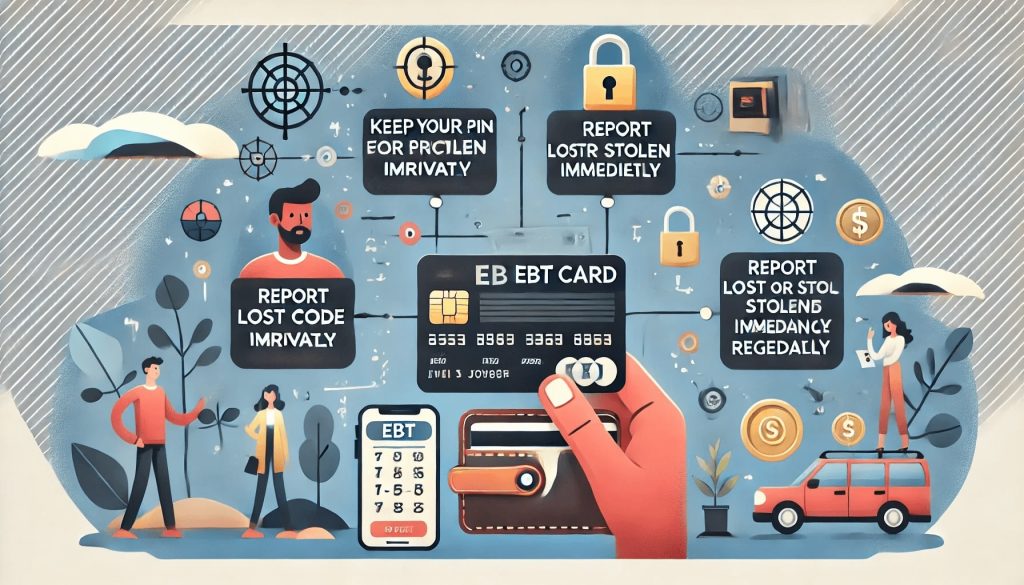
By Ethan Brooks November 25, 2024
In today’s modern world, electronic benefits transfer (EBT) cards have become an essential tool for millions of individuals and families who rely on government assistance programs. EBT cards, also known as food stamp cards or SNAP cards, provide a convenient and secure way for eligible individuals to access their benefits. However, many customers may not be fully aware of how to effectively use their EBT cards or understand the various aspects of the program.
In this comprehensive guide, we will explore the ins and outs of EBT cards, including how they work, eligibility criteria, tips for safeguarding your card, navigating the EBT system, maximizing benefits and savings, understanding restrictions, locating approved retailers, and addressing frequently asked questions.
How EBT Cards Work: A Step-by-Step Guide

To begin our journey into educating customers on using EBT cards, let’s delve into the step-by-step process of how these cards work. EBT cards function similarly to debit cards, allowing cardholders to make purchases at authorized retailers. The first step is to apply for an EBT card through your state’s social services agency. Once approved, you will receive your card in the mail, along with a personal identification number (PIN). It is crucial to keep your PIN confidential to prevent unauthorized access to your benefits.
When you are ready to make a purchase, simply swipe your EBT card at the point of sale (POS) terminal or hand it to the cashier. You will then be prompted to enter your PIN to verify your identity. Once the transaction is approved, the purchase amount will be deducted from your available balance. It is important to note that EBT cards can only be used to purchase eligible food items, such as fruits, vegetables, dairy products, meat, and bread. Non-food items, such as alcohol, tobacco, and pet food, are not eligible for purchase with EBT cards.
Benefits and Eligibility Criteria for EBT Cardholders

Now that we understand the basics of how EBT cards work, let’s explore the benefits and eligibility criteria for EBT cardholders. The Supplemental Nutrition Assistance Program (SNAP) is the primary program that utilizes EBT cards to provide food assistance to low-income individuals and families. Eligibility for SNAP benefits is determined based on factors such as income, household size, and expenses. Each state has its own specific guidelines, so it is important to check with your state’s social services agency to determine if you qualify.
SNAP benefits can be a lifeline for those facing food insecurity, as they help ensure access to nutritious food. In addition to SNAP, some states also offer other assistance programs that utilize EBT cards, such as Temporary Assistance for Needy Families (TANF) and Women, Infants, and Children (WIC). These programs provide additional support for families with children and pregnant women.
Essential Tips for Safeguarding and Protecting Your EBT Card

As with any financial tool, it is crucial to safeguard and protect your EBT card to prevent unauthorized use and potential loss of benefits. Here are some essential tips to keep in mind:
- Keep your EBT card in a safe place: Treat your EBT card like you would a debit or credit card. Keep it in a secure location, such as a wallet or purse, to minimize the risk of loss or theft.
- Memorize your PIN: Avoid writing down your PIN or sharing it with others. Memorize it to ensure that only you can access your benefits.
- Be cautious of phishing scams: Be wary of unsolicited calls, emails, or text messages asking for your EBT card information. Government agencies will never ask for your PIN or personal information over the phone or through email.
- Report lost or stolen cards immediately: If your EBT card is lost or stolen, contact your state’s social services agency immediately to report it. They will deactivate the card and issue a replacement.
- Regularly check your balance and transaction history: Stay vigilant by regularly checking your EBT card balance and transaction history. This will help you identify any unauthorized activity and ensure that your benefits are being used correctly.
Navigating the EBT Card System: Commonly Used Terminology
As customers navigate the EBT card system, they may encounter various terms and acronyms that can be confusing. Understanding these commonly used terms is essential for effectively using your EBT card. Here are some key terms to familiarize yourself with:
- EBT: Electronic Benefits Transfer, the system used to electronically distribute government benefits, including SNAP, TANF, and WIC.
- POS: Point of Sale, the location where you can use your EBT card to make purchases.
- PIN: Personal Identification Number, a unique code that verifies your identity when using your EBT card.
- SNAP: Supplemental Nutrition Assistance Program, the federal program that provides food assistance to eligible individuals and families.
- TANF: Temporary Assistance for Needy Families, a program that provides cash assistance to low-income families with children.
- WIC: Women, Infants, and Children, a program that provides nutrition education, healthy food, and support to pregnant women, new mothers, and young children.
Making the Most of Your EBT Card: Maximizing Benefits and Savings
While EBT cards are primarily used for purchasing eligible food items, there are ways to maximize your benefits and savings. Here are some strategies to consider:
- Plan your meals and create a shopping list: By planning your meals in advance and creating a shopping list, you can avoid impulse purchases and ensure that you are making the most of your benefits.
- Shop for sales and use coupons: Keep an eye out for sales and discounts on eligible food items. Additionally, using coupons can help stretch your benefits even further.
- Buy in bulk: Consider purchasing non-perishable items in bulk to save money in the long run. Just make sure to check the expiration dates and storage requirements.
- Utilize farmers markets and community-supported agriculture (CSA) programs: Many farmers markets and CSA programs accept EBT cards, allowing you to purchase fresh, locally grown produce. This not only supports local farmers but also provides access to nutritious food options.
Understanding EBT Card Restrictions and Prohibited Purchases
While EBT cards provide essential assistance for purchasing food, it is important to understand the restrictions and prohibited purchases. EBT cards cannot be used to purchase non-food items, such as alcohol, tobacco, vitamins, supplements, hot prepared foods, and pet food. Additionally, EBT cards cannot be used for cash withdrawals or to pay for services, such as restaurant meals or transportation.
It is crucial to adhere to these restrictions to ensure that your benefits are used appropriately and to avoid potential penalties or loss of benefits. Familiarize yourself with the specific guidelines in your state to ensure compliance.
How to Locate and Access EBT-Approved Retailers and Farmers Markets
To effectively use your EBT card, it is important to know where you can access EBT-approved retailers and farmers markets. Most grocery stores and supermarkets accept EBT cards, but it is always a good idea to confirm with the store beforehand. Many retailers display the EBT logo or signage indicating that they accept EBT cards.
In addition to traditional retailers, farmers markets and CSA programs are increasingly accepting EBT cards. These options provide access to fresh, locally grown produce and support local farmers. To find EBT-approved farmers markets in your area, you can visit the USDA’s Farmers Market Directory or contact your state’s social services agency for more information.
Frequently Asked Questions (FAQs)
Q1. Can I use my EBT card to purchase organic or specialty foods?
Yes, you can use your EBT card to purchase organic or specialty foods as long as they are eligible food items. However, keep in mind that the price of these items may be higher, so it is important to budget accordingly.
Q2. Can I use my EBT card to purchase food online?
Yes, some states have implemented online purchasing programs that allow EBT cardholders to order groceries online for home delivery or pickup. Check with your state’s social services agency to see if this option is available in your area.
Q3. Can I transfer my EBT benefits to another person?
No, EBT benefits are non-transferable and can only be used by the eligible cardholder. Sharing or selling your benefits is against the program rules and can result in penalties or loss of benefits.
Q4. What should I do if my EBT card is not working?
If your EBT card is not working, first check your balance to ensure that you have sufficient funds. If the issue persists, contact your state’s social services agency for assistance.
Q5. Can I use my EBT card in other states?
Yes, EBT cards can be used in any state that accepts SNAP benefits. However, it is important to note that some states may have different eligibility criteria or restrictions, so it is advisable to familiarize yourself with the specific guidelines of the state you are visiting.
Conclusion
In conclusion, educating customers on using EBT cards is crucial for ensuring that eligible individuals and families can effectively access and utilize their benefits. By understanding the basics of EBT cards, how they work, eligibility criteria, tips for safeguarding your card, navigating the EBT system, maximizing benefits and savings, understanding restrictions, and locating approved retailers and farmers markets, customers can make the most of their EBT cards and improve their overall well-being.
It is important to stay informed, ask questions, and take advantage of the resources available to ensure a smooth and successful experience with EBT cards.